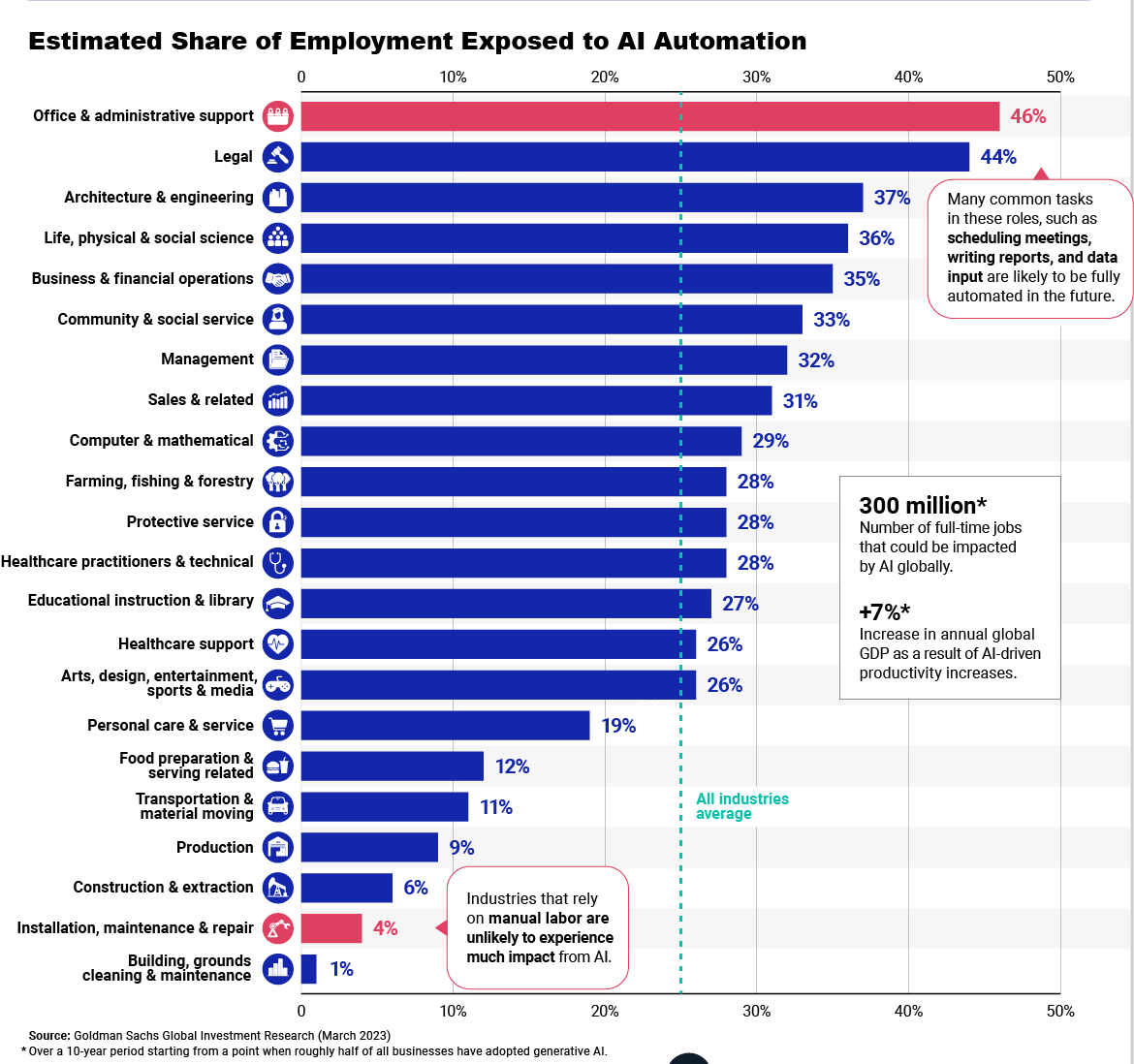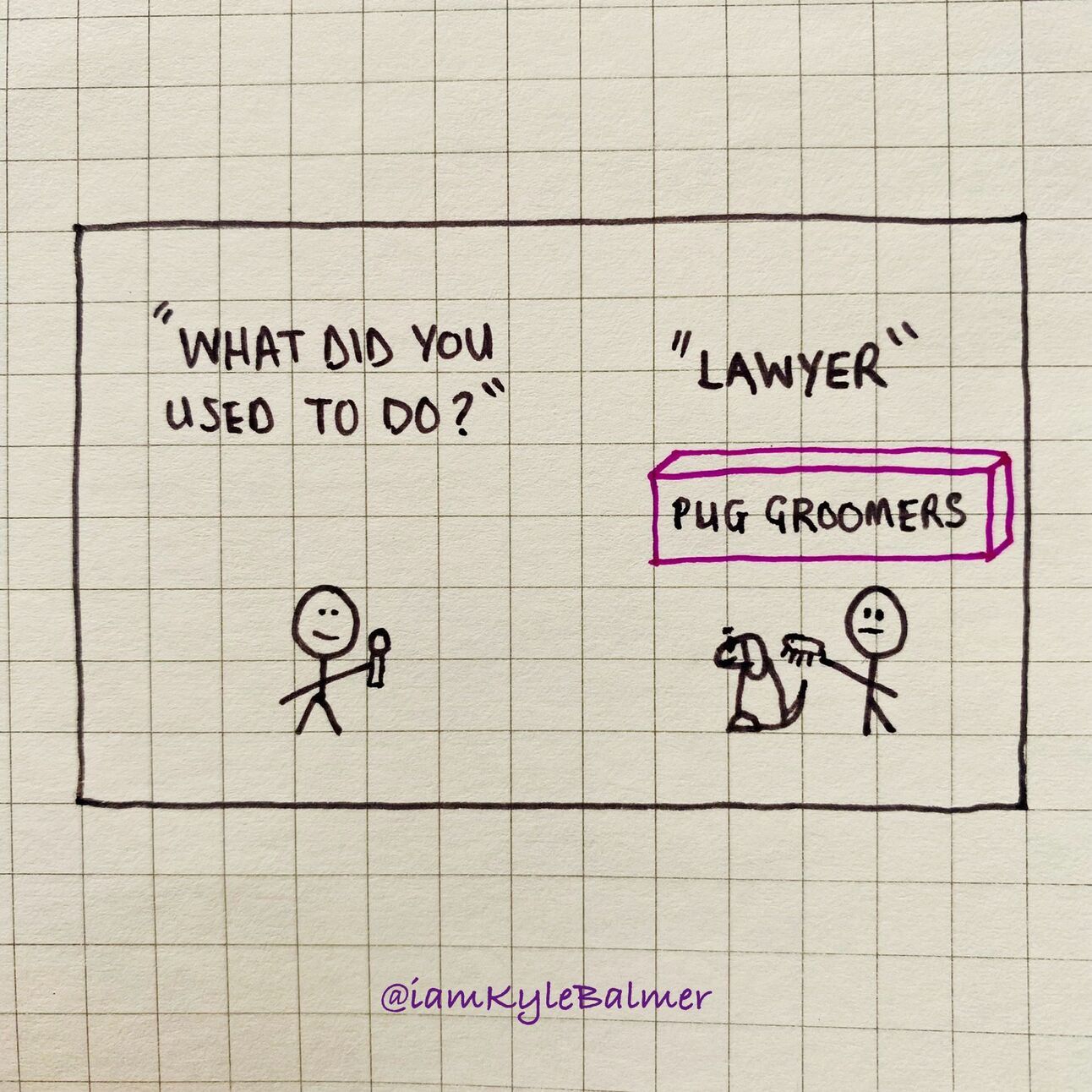Introduction
The last section was pretty gloomy sorry!
In this section we’re pulling out of the doom nosedive and looking at ways to immediately future proof our roles.
We’ll get rolling right after this word from our sponsor.
6.7X Leads* With 1 Tool? (Without Losing Your Cool)

Does prospecting waste your time getting stung by all the wrong needles of the haystack?
Then it’s time you tried Zaplify – a metal detector for better leads (that gets your time & sanity back)
It’s also waaay smoother & effective than any botched 6-part Franken-tool out there.
Our users have a proven *33.8% response rate vs. cold email’s 1-5% (a 676% difference, at least!)
As an early adopter, you can reach out to 20 new people for free. Every month. Until pugs fly.
So, why not automate what you can & make more moves? After all, you have better things to do.
→ Contact 20 people for free & hear back from 6 every month (statistically speaking)
Let’s get started:
Future Proofing
A few months ago on Twitter I asked what the safest job against AI was.
It sparked off a lively debate.
Was it doctors? Lawyers? Builders? Postmen? Coders?
Lots of arguments, lots of reasons for why some roles are safer than others.
After the dust had settled I knew my favourite answer:
Dog Groomer.

Ok it sounds like a silly example. But underlying it is a serious point.
Dog grooming has a number of attributes that make it AI proof. And by exploring those we can draw wider lessons.
Interestingly one equally valid answer (suggested by an actual beauty aesthetician) was, I quote, “butthole waxer”.
Whilst equally accurate we’ll stick to dog groomer and keep this safe for work.
Prefer video? I talk about this topic here:
https://www.tiktok.com/embed/v2/7341832143607303457?lang=en-GB&referrer=https%3A%2F%2Fpromptentrepreneur.beehiiv.com%2Fp%2Fai-and-the-future-of-work-part-2
What protects dog groomers?
There are three attributes that protect dog groomers and any other jobs that have these attributes.
This is not just a newsletter about how you should become a dog groomer!
The three attributes are:
- physicality
- non-algorithmic
- empathy
Stupid robot
Physicality is the first attribute.
Basically any job that requires working in the physical world of atoms rather than digital world of bits.
Dogs are (last I checked) physical.
And groomers need physical implements to groom the dog.
If we check the industry exposure to AI chart notice what the lowest exposure industries are:

They are physical meat world jobs.
AI is amazing at cognitive work. Better than humans in some cases. So these roles are most at risk. White collar will fall before blue collar.
What’s holding back AI’s progress in the physical realm is robotics.
Right now robotics is not as advanced as AI.
Robotics has not had its “ChatGPT moment”.
Now some of you are about to angrily email me asking if I’ve seen the most recent Boston Dynamics and Tesla robots. I have. And they are amazing.
They are also i) unavailable for the public and ii) expensive.
The Tesla robot is expected to cost $20,000. Which is extremely cheap for what it is. But it’s still not cheap enough for us to deploy robots en masse.
This time will come. Robotics prices will fall and this will allow AI to be deployed more and more in other industries. But it will take longer.
So, more broadly, any job that has physical elements is more impervious to AI. At least for now.
This could be manual work but also face to face meetings, public speaking, networking or anything that requires a physical presence for full impact.
All work and no play makes Jack a dull boy
Next up, dog grooming is hard to encapsulate in an algorithm.
An algorithm is a set of steps or instructions.
AIs work well on tasks where there is a very specific set of steps – once it has that framework it can carry out the job much faster than a human.
There is, of course, a basic set of instructions with grooming a dog – secure the dog, wash, cut, dry, trim nails etc.
But dogs come in a huge range of shapes and sizes. This makes the algorithm much more complex – you need one for chihuahuas and another for doberman pinchers.
Because of this, dog grooming is a trickier task for AI + robotics automation than human hairdressing.
Humans have (roughly) the same shape head. There’s less complexity in the algorithm. The AI needs to know where the front and back is (ideally 🤣, just imagining a #haircutfail backwards cut). But apart from that the basic geometry is similar.
More broadly any job that is difficult to break down into steps is better protected.
The more randomness, the more chaos, the better.
A great example is in healthcare. Compare nurses and imaging consultants.
Right now imaging consultants get paid a tonne to look at images from MRIs, CAT scans and other devices. They get big bucks because they can identify patterns in the images.
Guess what’s better at that? AI.
Here in the UK the government just earmarked £800m for AI investment in various services. This includes upgrading MRI machines to use AI in order to clear the backlog of 130,000 people waiting for scans.
The radiologists and imaging consultants are on borrowed time. Their role is too algorithmic and already AI can do it better.
Nurses on the other hand have a non-algorithmic job. Every day their job will include 100 tasks, all diverse, never the same each day. They are there to deal with the chaos of a ward or ER.
Their job cannot be easily written down as a set of steps. And as such it’s more insulated from AI.
Human connection
The third attribute is empathy and communication.
In the case of the dog groomer it’s the ability to calm down a dog so the work can be done. In the case of a nurse it might be telling silly jokes to a child in order to distract them whilst a doctor takes their bloods.
This is something that currently AI can’t do.
And arguably it’ll never be as good at it as humans – who have had thousands of years of “training”. This is what being human is about. And we’re (mainly) good at it.
This doesn’t mean AI can’t learn – in fact there are some amazing micro-expression detecting AIs already – but it is an area were humans will hold an advantage for a while.
And we might actually see an increased emphasis on the human as AI develops. As we allow AI to deal with the legwork of life we’ll free up more time for the unique human aspects.
Even now I use AI to alleviate my workload so that I can focus on writing, recording video, teaching and talking to people. The more “human” areas. Areas where I know I have a comparative advantage.
Seek these areas in your role and lean in.
Identify your dog grooming roles
As mentioned this isn’t about you becoming a dog groomer.
If you already are – all power to you! 🤣 Great choice!
This is instead about working out what areas of your current role have these attributes of physicality, non-algorithmic and empathetic work.
Here’s a prompt:
Act as an AI job consultant
Review the details of my role above
And suggest areas I can focus on that are insulated from AI
These areas will be:
-physical. What physical, in-person elements can I perform that an AI will currently struggle with.
-non-algorithmic. What elements can a human deal with better than an AI that requires a set of formal instructions for best results.
-empathy focused. What areas rely on human interaction, communication and empathy.
For each highlight multiple potential areas.
I ran this prompt with the data entry role from the last Part (which is more at risk).
Here’s an excerpt:

Solid advice – focusing on problem solving, designing workflows and training rather than the actual data entry.
Run this prompt with your role information from the last Part to pull out similar elements to future proof with.
